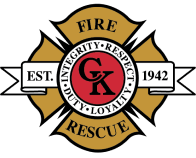Carbon Monoxide (CO) is a gas that is produced when you burn fuel such as wood, gasoline, oil, kerosene, natural gas, propane gas, coal or charcoal. You can’t see or smell Carbon Monoxide, but it is a very deadly gas. In a properly working and correctly installed appliance the amount of CO released into the air is not dangerous. However, when appliances are improperly installed or not working correctly they may produce dangerous levels of CO.
CO poisoning symptoms include severe headaches, dizziness, confusion, nausea and similar flu-like symptoms. When CO poisoning is the cause of these symptoms they usually occur only in the home and decrease or disappear when you leave for work or go to school. Everyone in your home may have similar symptoms.
In fact, CO poisoning is sometimes confused with the flu or food poisoning. One telltale sign of CO poisoning is dark red coloration of the lips and skin under the fingernails. This is a result of the CO sticking to the iron in the red blood cells of your body.
If you or your family experience symptoms that may be caused by CO take the following actions:
- Leave your house and get into fresh air immediately.
- CO poisoning is a MEDICAL EMERGENCY – call 9-1-1 from a safe area.
When you call 9-1-1 for suspected CO poisoning Central Kitsap Fire & Rescue has the ability to sample the air in your home for CO levels.
To prevent CO poisoning take the following precautions:
- Have fuel-burning appliances installed and inspected in accordance with the manufacturers recommendations. *
- Never use unvented gas or kerosene heaters in your home.
- Never use charcoal grills or barbeques indoors.
- Never leave a car running in a garage even with the garage door open.
- Never ignore the symptoms of CO poisoning – call 9-1-1 immediately.
- If you use a fuel-burning appliance install a working CO monitor in your home to alert you if CO levels rise to dangerous levels
* Kitsap County Building Codes require a Permit for the installation of any home or building heating appliance including wood or gas furnaces and fireplace inserts.
Carbon Monoxide Detectors
Homes with fuel burning appliances should have Carbon Monoxide Detectors to increase safety. These detectors may be purchased in home supply stores and various department stores. Be a smart consumer and compare prices and look for an independent testing laboratory label such as the Underwriters Laboratory UL Label. Always read the manufacturers label when installing your CO Detector.
Remember that a CO Detector is not a replacement for good maintenance and common sense. Have appliances installed and maintained properly and never use equipment or appliances in a way they were not designed for. Leave your home and call 9-1-1 to report Carbon Monoxide emergencies.

